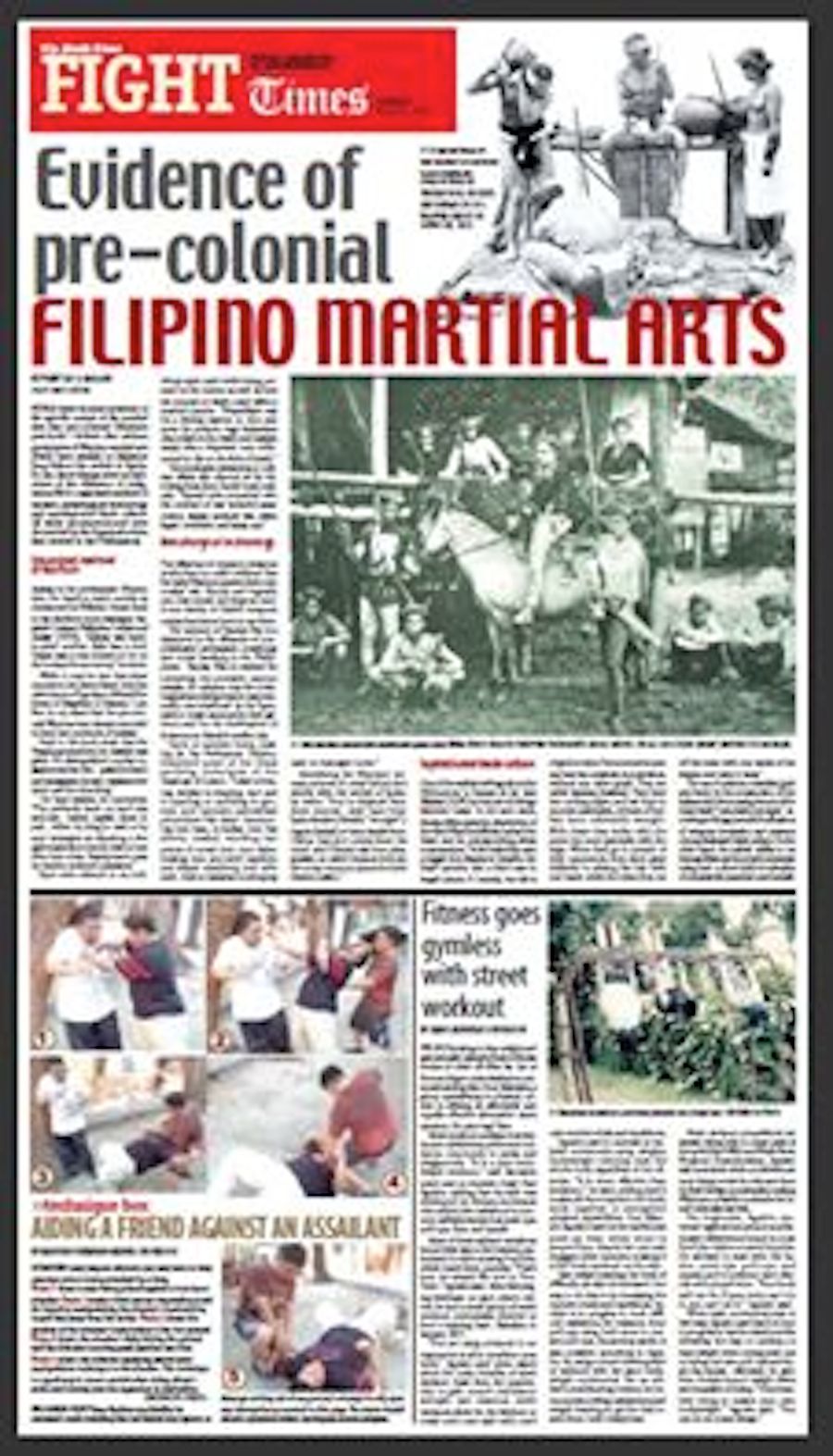Evidence of pre-colonial FILIPINO MARTIAL ARTS
May 25, 2014 12:30 am
by Perry Gil S. Mallari FIGHT Times Editor
While there is scant mention of the specific names of the martial arts that pre-colonial Filipinos practiced, I believe that various prototypes of Filipino martial arts (FMA) were already in existence long before the arrival of Spain. To me, three things serve as indicators of the existence of indigenous FMA: organized method of warfare, metallurgical technology and sophisticated blade culture. All three aforementioned were chronicled by the Spaniards when they arrived in the Philippines.

A typical forge of iron workers in northern Luzon highlands (FROM THE BOOK THE TINGUIAN SOCIAL, RELIGIOUS, AND ECONOMIC LIFE OF A PHILIPPINE TRIBE BY FAY- COOPER COLE, 1922).
Organized method of warfare
Asdang is the prehispanic Filipino term for hand-to-hand combat as mentioned by William Henry Scott in his excellent book Barangay: Sixteenth-Century Philippine Culture and Society (1994), “Asdang was hand-to-hand combat. Bulu was a duel. Hulaw was a man known to be on the lookout for an enemy,” he wrote.
While it may be true that sheer number is the prime factor why the native army of Lapulapu defeated the forces of Magellan in Mactan, I am firm in my stand that the pre-colonial Filipinos were already schooled in their own methods of warfare.
Scott in his book wrote that the Visayan general term for warfare was gubat. He distinguished combat engagements into two—gahat (by land) and mangayaw (by sea). Salakay is the word used for attacking.”
On land attacks, he comments, “The preferred tactic on land was ambush—habon, saghid, hoom or pool—either by lying in wait or by such strategies as exposing a few agile warriors to enemy view to lure them into a trap. Sayang was to pass by hidden enemies unawares.”

Sulu warriors armed with swords and spears circa 1890s (PHOTO FROM THE PHILIPPINE PHOTOGRAPHS DIGITAL ARCHIVE, SPECIAL COLLECTIONS LIBRARY, UNIVERSITY OF MICHIGAN)
Scott even referred to an individual tactic used while being pursued by the enemy as well as how the concept of death could affect a warrior’s psyche, “Pinaorihiyan was for a fleeing warrior to turn and spear his pursuer; naga kamatayan was to fight to the death; and mangin matay was a desperate man determined to die on the field of battle.”
Terminologies pertaining to military affairs also abound as the following lines from Scott’s book indicate, “Special roles connected with the conduct of war included away, enemy; bantay, sentinel; bila, allies; kagon, mediator; and laway, spy.”
Continue reading article here: http://www.manilatimes.net/evidence-of-pre-colonial-filipino-martial-arts-2/99117/

















